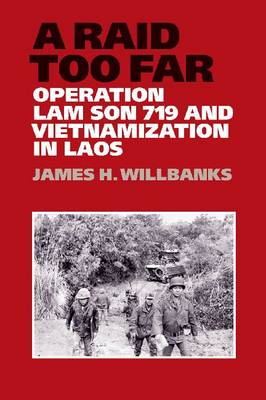Williams-Ford Texas A&M University Military History
2 total works
In Danger 79er, historian James H. Willbanks tells the remarkable story of Lt. Gen. James F. Hollingsworth, a three-time recipient of the Distinguished Service Cross along with four Silver Stars, six Purple Hearts, and a host of additional medals and commendations. His career spanned wars both cold and hot, and throughout, "Holly" was a hard-charging, hands-on soldier who could be irreverent and brash but always "led from the front."
Hollingsworth entered the US Army as a second lieutenant upon graduation from the Agricultural and Mechanical College of Texas (now Texas A&M University). In World War II, while leading tanks in Gen. George S. Patton's Third Army, Hollingsworth encountered dug-in German defenders. He lined up his thirty-four tanks and issued a command rarely heard in modern warfare: Charge! Patton later recognized Hollingsworth as one of the two best armored battalion commanders in the war.
Twenty years later, Hollingsworth served in Vietnam, where he became identified by the radio call-sign of "Danger 79er," a designation that remained for the duration of his career. He later served in South Korea commanding I Corps (ROK/US) Group, the largest combined field army in the world. Even after retirement from active duty, Hollingsworth continued to serve as a military adviser during the Cold War.
Danger 79er provides a compelling and inspiring read as it recounts the exciting story of one of the most decorated soldiers in the history of the US Army.
Hollingsworth entered the US Army as a second lieutenant upon graduation from the Agricultural and Mechanical College of Texas (now Texas A&M University). In World War II, while leading tanks in Gen. George S. Patton's Third Army, Hollingsworth encountered dug-in German defenders. He lined up his thirty-four tanks and issued a command rarely heard in modern warfare: Charge! Patton later recognized Hollingsworth as one of the two best armored battalion commanders in the war.
Twenty years later, Hollingsworth served in Vietnam, where he became identified by the radio call-sign of "Danger 79er," a designation that remained for the duration of his career. He later served in South Korea commanding I Corps (ROK/US) Group, the largest combined field army in the world. Even after retirement from active duty, Hollingsworth continued to serve as a military adviser during the Cold War.
Danger 79er provides a compelling and inspiring read as it recounts the exciting story of one of the most decorated soldiers in the history of the US Army.
In February 1971, the Army of the Republic of Vietnam (ARVN) launched an incursion into Laos in an attempt to cut the Ho Chi Minh Trail and destroy North Vietnamese Army (NVA) base areas along the border. This movement would be the first real test of Vietnamization, Pres. Richard Nixon’s program to turn the fighting over to South Vietnamese forces as US combat troops were withdrawn. US ground forces would support the operation from within South Vietnam and would pave the way to the border for ARVN troops, and US air support would cover the South Vietnamese forces once they entered Laos, but the South Vietnamese forces would attack on the ground alone.
The operation, dubbed Lam Son 719, went very well for the first few days, but as movement became bogged down the NVA rushed reinforcements to the battle and the ARVN forces found themselves under heavy attack. US airpower wreaked havoc on the North Vietnamese troops, but the South Vietnamese never regained momentum and ultimately began to withdraw back into their own country under heavy enemy pressure.
In this first in-depth study of this operation, military historian and Vietnam veteran James H. Willbanks traces the details of battle, analyzes what went wrong, and suggests insights into the difficulties currently being incurred with the training of indigenous forces.
The operation, dubbed Lam Son 719, went very well for the first few days, but as movement became bogged down the NVA rushed reinforcements to the battle and the ARVN forces found themselves under heavy attack. US airpower wreaked havoc on the North Vietnamese troops, but the South Vietnamese never regained momentum and ultimately began to withdraw back into their own country under heavy enemy pressure.
In this first in-depth study of this operation, military historian and Vietnam veteran James H. Willbanks traces the details of battle, analyzes what went wrong, and suggests insights into the difficulties currently being incurred with the training of indigenous forces.

